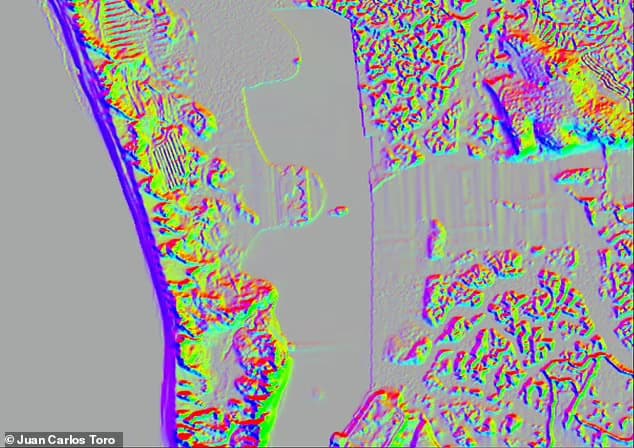Scientists from the Andalucian Historical Heritage Institute (IAPH) and the University of Seville have located the traces of a large Roman and Phoenician building. They did this by analysing – with free software – measurements in the area in the bay of Cadiz. This was followed by fieldwork in situ.

The mythical temple of Hercules Gaditanus, called Melqart in Phoenician times, was an important place of pilgrimage in antiquity. Millennia later, its location remains a mystery and has become a kind of holy grail for historians and archaeologists. Moreover, they have been searching for it for centuries.
Traces of a monumental building found
However, a researcher from the University of Seville, Ricardo Belizón, shines new light on the case. Together with a team of scientists from the University of Seville and the Andalucian Historical Heritage Institute (IAPH), he has located traces of a monumental building in the Sancti Petri canal. This is a coastal area in the Bay of Cadiz between Chiclana de la Frontera and San Fernando. The area is an intertidal zone; it is above water at low tide and underwater at high tide. Belizón analysed the measurements of the area using free software.
If confirmed, the sanctuary, which was visited by Julius Caesar and the Carthaginian conqueror Hannibal, among others, and which dates back to at least the 9th century B.C., would actually be in the area that various archaeological finds have been pointing to for centuries.
The Temple of Hercules Gaditanus
The Temple of Hercules Gaditanus is said to have been a columned temple with an eternal flame, a fire raised on an altar, maintained day and night by priests.
The frontispiece between the columns depicted the twelve labours of Hercules, carved in bronze.
Hercules completed the twelve labours as penance for killing his wife Megara and five children after he was driven insane by Hera, who is the goddess of family and wife of Zeus.
Offerings would have been placed inside the entrance columns and the entire temple would have been on a raised stone plinth.
Greek and Latin records also say this is the place where Julius Caesar wept bitterly before a representation of Alexander the Great and where the Carthaginian conqueror Hannibal went to offer thanks for the success of his military campaign a century and a half earlier, El Pais reports.
And now the mythical temple may have been found after centuries of searching.

